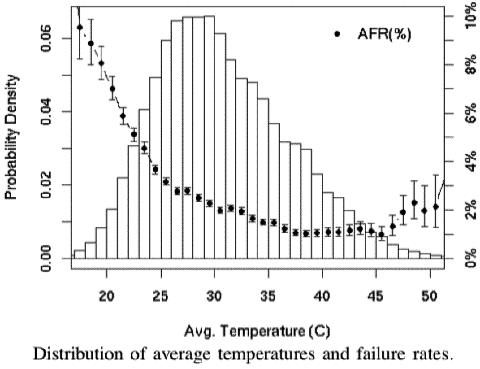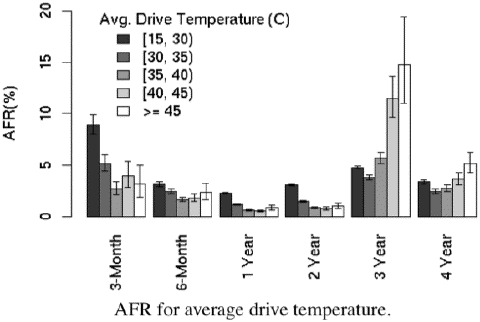There are lots of different opinions on the web on this topic (including what I've been going by here: http://www.buildcomputers.net/hdd-temperature.html), but I wanted to get the FreeNAS experts' opinions on safe HD operating temps, specifically for WD Reds since they seem to have become pretty popular.
I'd like to break it down into 3 questions...
1) What is the optimal temp range I should be aiming for to maximize drive lifespan?
2) At what temp should I start to worry, and look into more/other cooling options?
3) At what temp should I shut off the machine (or disconnect the drive, if only one) until the issue is resolved?
Personally, I've been seeing my 8x4TB Reds hovering in the mid-high 30's during the day and low 30's at night (when the heats off). However during heavy loading I've seen it peak around 40-42C (although usually just on one or two drives). I did think this was safe until I started reading some threads where some folks were extremely adamant about never letting a drive go above 40C, so I thought it would be worthwhile to some more definitive opinions on the subject.
I'd like to break it down into 3 questions...
1) What is the optimal temp range I should be aiming for to maximize drive lifespan?
2) At what temp should I start to worry, and look into more/other cooling options?
3) At what temp should I shut off the machine (or disconnect the drive, if only one) until the issue is resolved?
Personally, I've been seeing my 8x4TB Reds hovering in the mid-high 30's during the day and low 30's at night (when the heats off). However during heavy loading I've seen it peak around 40-42C (although usually just on one or two drives). I did think this was safe until I started reading some threads where some folks were extremely adamant about never letting a drive go above 40C, so I thought it would be worthwhile to some more definitive opinions on the subject.


